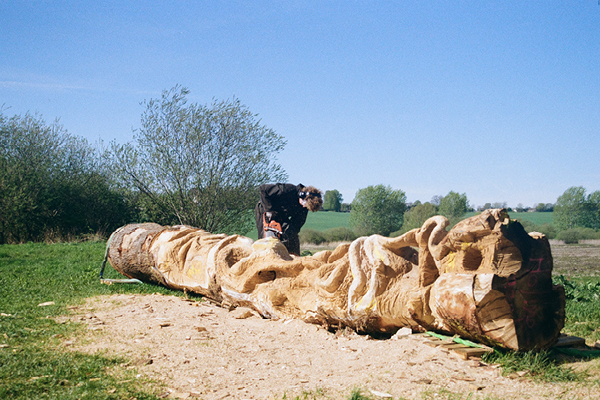Holmegaard Outdoor
On the edge of Holmegaard Værk lies the marvelous glass city and the scenic Holmegaard Bog.
Both are home to a wealth of stories and tales about everything from past settlements to myths about bog creatures, archaeological finds, peat extraction and much more.
In our free experience initiative created with support from the Nordea Foundation, you can explore five fascinating podcast routes filled with exciting and captivating stories from Holmegaard Bog and the glass city.


Five fascinating podcast routes
Welcome to Holmegaard Outdoor.
In the five podcast routes, you can experience culture and nature merge in a symphony of sound and stories that take you to a world of art, archaeology, myths, people, bog creatures and much more.
Here the bog meets the whispers of the past and opens a portal of wondrous stories as you move around the beautiful Holmegaard Mose and atmospheric glass town.
Along the way, you'll hear about spectacular archaeological finds, artistic impulses and mysterious bog creatures as you embark on an aural journey through more than 10,000 years of cultural history.
Holmegaard Outdoor consists of five audio routes in the area around Holmegaard Værk, each delving into a different aspect of Holmegaard's history and nature.
Each route is approximately 2.5 kilometers long.
'Receiver' by Bjørn Magnussen
The sculpture with the poetic name 'Receiver' is created by artist Bjørn Magnussen.
The work symbolizes intuition, which is central to the artist's own life and work, and which has been a crucial elemental force since the dawn of time.
This includes here in Holmegaard Mose, where man has lived off and with nature for 10,000 years. Here, inherent intuition has meant the difference between life and death for those who have lived and hunted here since the Stone Age.
With the work 'Receiver', Bjørn Magnussen insistently invites you to enter the marsh with openness and curiosity and, for a moment, forget everything you think you know.
As part of the route 'The Inspiring Bog', you can hear Bjørn Magnussen talk about his work with the 10 meter high work 'Receiver', which is made of oak, glass and a marble base.

Hunt time-traveling Stone Age animals
Explore Holmegaard Mose and catch time-traveling Stone Age creatures in the interactive game 'Beast Hunt'.
Grab your weapon and go hunting in a world of insane monsters and disturbing creatures.
Wherever the beasts are hiding, you must track them down and send them back to the Stone Age. But the beasts will do everything they can to mess up your equipment and avoid capture.
If they succeed, both marsh and humans are in great danger! We trust you!
Beast Hunt is part of Holmegaard Outdoor.